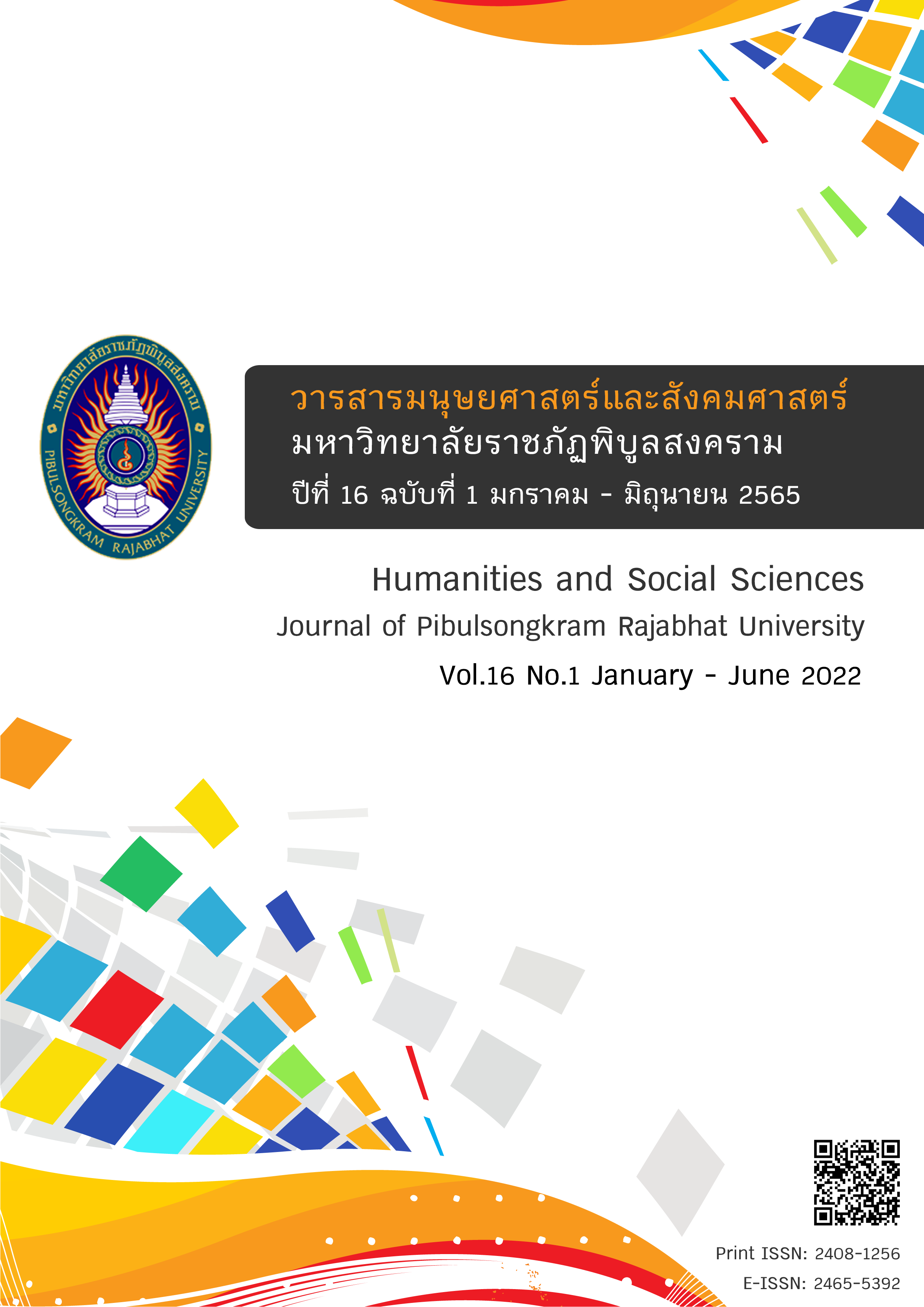Tourism Promotion for Active Aging Tourist with perceived sense of Terra Incognita in Thailand
DOI:
https://doi.org/10.14456/psruhss.2022.23Keywords:
Active aging tourist, Tourism marketing development, Sense of terra incognita, NoveltyAbstract
The purpose of this research is to study the novelty and the sense of Terra Incognita perceived by the Active Aging tourists as of their tourism experience. The result of this study was analyzed to identify types the experience in order to propose guidelines for tourism development and promotion policy for this group of tourists. This research has applied a qualitative research approach. The in-depth interviews were conducted with 30 Thai and foreign Active Aging tourists. The results showed that recognition in sense of Terra Incognita occurred in places that have never been visited and visited before. It could be concluded into four types of motivation and experience, namely; the sense of challenge, the sense of excitement, and the sense of amazement. In addition, the sense of nostalgia is also found in sense of Terra Incognita for places that have been visited. It can conclude that novelty is a significant component in all types of motivation and experience, which is based on semi-adventure activities, relations and friendship, cultural learning, being in nature, and experience in tourism services. The level of novelty in the tourism experience is at a medium level, which is higher than the general elderly but not as high as the teenagers. Public and private sectors should establish policies and activities to enhance the market potential for this group of tourists, both in the design of activities and tourism services, facilities and safety, and promoting tourism image.
References
กลุ่มประสานและติดตามสารสนเทศ สำนักงานสถิติแห่งชาติ. (2560). ดัชนีพฤตพลังผู้สูงอายุไทย (Active Aging Index of Thai Elderly). กรุงเทพฯ: เท็กซ์แอนด์เจอร์นัลพับลิเคชั่น.
กองเศรษฐกิจการท่องเที่ยวและกีฬา กระทรวงการท่องเที่ยวและกีฬา. (2559). รายงานสภาวะเศรษฐกิจการท่องเที่ยว Tourism Economic Review . กรุงเทพฯ: สำนักงานปลัดกระทรวงการท่องเที่ยวและกีฬา.
จิราวดี รัตนไพฑูรย์ชัย. (2557). ตลาดนักท่องเที่ยวผู้สูงอายุ : โอกาสใหม่ไทย เติบโตรับ AEC. หนังสือพิมพ์กรุงเทพธุรกิจ Section : ASEAN+, หน้า 1.
ปณิธี บราวน์. (2557). พฤฒพลัง: บทบาทของกลุ่มผู้สูงอายุและทุนที่ใช้ในการขับเคลื่อนงานด้านผู้สูงอายุ. มนุษยศาสตร์และสังคมศาสตร์, 30(3), 97-120.
สำนักงานปลัดกระทรวงการท่องเที่ยวและกีฬา. (2561). ตลาดนักท่องเที่ยวสูงอายุชาวต่างชาติเป็นตลาดที่มีอัตราการขยายตัวอย่างรวดเร็วและมีแนวโน้มเพิ่มขึ้นโดยนับจากปี 2555. สืบค้น 17 พฤศจิกายน 2562, จาก https://secretary.mots.go.th/index.php
Cavagnaro, E., & Staffieri, S. (2015). A study of students’ travellers values and needs in order to establish futures patterns and insights. Journal of Tourism Futures, 1(2), 94-107.
Cohen, E. (1972). Towards a sociology of international tourism. In Social Research, 39(1), 164-182.
Cohen, E. (1979). A phenomenology of tourist experiences. Sociology, 13(2), 179-201.
Hung, K., & Petrick, J. (2008). Baby boomers and future seniors: How to get them on motorcoaches? Retrieved from American Bus Association Foundation: https://www.buses.org/
Lew, A. (1987). A Framework of Tourist Attraction Research. Annals of Tourism Research, 14(4), 553-75.
Plog, S. C. (1974). Why destination areas rise and fall in popularity. The Cornell Hotel and Restaurant Administration Quarterly, 14(4), 55-58.
Rosenbloom, S. (2013). We're all boomers now. New York: Times.
Schiffman, L. G., & Sherman, E. (1991). Value orientations of new-age elderly: The coming of an ageless market. Journal of Business Research, 22(2), 187-194.
Downloads
Published
How to Cite
Issue
Section
License
Copyright (c) 2020 Humanities and Social Sciences Journal of Graduate School, Pibulsongkram Rajabhat University

This work is licensed under a Creative Commons Attribution-NonCommercial-NoDerivatives 4.0 International License.
Any articles or comments appearing in the Journal of Humanities and Social Sciences, Rajabhat Phibulsongkram University, are the intellectual property of the authors, and do not necessarily reflect the views of the editorial board. Published articles are copyrighted by the Journal of Humanities and Social Sciences, Rajabhat Phibulsongkram University.









